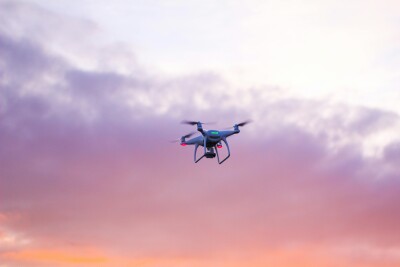Partnerships between companies like MicaSense Partners and Pix4D as well as the agreement between senseFly and Airware are just a couple examples of a movement that is happening throughout the drone space. Drone partnerships between hardware, software, and service organizations are forming at an unprecedented rate in an attempt to create a complete drone solution that is designed to make adoption that much easier for users.
It can be difficult to keep track of which companies are working with one another as well as what they might mean to users, but the
Drone Industry Insights (DRONEII) team has created an incredibly valuable resource to help.
Drone Partnerships Gone Wild looks at the various types of partnerships that have been formed, provides examples of what specific partnerships look like as well as an analysis of what they’ll mean to users and even the industry as a whole. You can
download their Drone Partnerships Gone Wild Slide here.

Kay Wackwitz
To get a better understanding around some of the info the DRONEII team laid out, I connected with Kay Wackwitz, CEO and Founder of Drone Industry Insights. We discussed some of the ramifications of these partnerships, whether or not he was surprised by any of these agreements, what users need to consider in light of these developments and more.
Jeremiah Karpowicz: How far down the road do you think many of these companies are thinking in forming these partnerships? Are many of these partnerships about being able to offer a more complete drone solution today, or to detain key-players from competitors tomorrow?Kay Wackwitz: I think all this happens on many layers.
Layer 1: There are drone companies (mainly startups) that realize they will not survive in the market and have to expand their product portfolio (e.g. drone + sensor or drone + software). This is mainly driven by Chinese price pressure and/or competitors in the same niche.
Layer 2: There are established players that realized the customer is looking for an easy-to-use end-to-end solution and strategically partner with hardware, software or service companies to deliver right that.
Layer 3: Large, well-established drone/non-drone companies that strategically partner with/acquire other drone companies to enrich their current portfolio with new/additional technologies or services. In this layer, there is a good chance that companies partner with legally binding exclusivity contracts to keep competitors out and create a competitive advantage.
Partnerships between hardware and software solutions make sense logistically, but the fact that we have software + software partnerships’ happening in this space is proof of how many specialized solutions are out there. What do these types of partnerships tell you about these solutions and even the market itself?It means two things: a) the software solution is not good enough and requires additional features to stand a chance or b) the product is so good and widely used and now it is time to expand the portfolio with new features. Either way, it speaks for an extremely viable market because solutions are being found and established at an incredible pace.
One thing that really stands out is that a lot of SW+SW partnerships will provide complete workflows - something no one was thinking about a year ago.
Were there any partnerships on your list that represented a big surprise to you? Or ones you envisioned had to happen sooner or later? Looking back, all the partnerships make sense - the surprise lies within the path the companies pursue with their decision. Very interesting are the bigger non-drone-related players that join the game (Epson, John Deere, Axis, Getty Images) and what they make out of it. The question always is: are small companies reaching out to the bigger ones (to e.g. use sales channels) or are they being incorporated?
To answer the second question: yes, the partnership between 3DR and DJI was sort of inevitable after 3DR left the hardware sector.
If the drone industry as a whole is headed into the trough of disillusionment, do you think that means we’ll see more of these types of partnerships by this time next year? Or perhaps we'll see a greater number of full on acquisitions or mergers? The trough of disillusionment sounds terrible, but is something very good actually.
First, it is the hype-cycle you are referencing - and hype is always something rather unhealthy. Disillusionment means people realize, there is quite a lot more to it to efficiently bring drones to action - this further increases product/service quality and brings us closer to the plateau to productivity. Partnerships and mergers/acquisitions mainly depend on the equality or inequality of the involved players. If you already are the market leader in a certain are, you don’t have to necessarily spend all that money to get what you want.
For example, DJI made a lot of
strategic partnerships and (now) only holds one majority stake. I think partnerships and acquisitions will continue at a high speed as many more non-drone companies will join the game and as the market consolidates further.
What should anyone looking to purchase or utilize a drone solution keep in mind in terms of how future solution partnerships might impact their decision? There certainly is an advantage if the drone company you have chosen has formed strategic partnerships - this speaks to a certain level of maturity and product portfolio. The possibility for this company to be displaced reduces and the chance to become part of an even greater ecosystem with better sales channels increases.
On the other hand, there are a lot of companies offering outstanding end-to-end products without any external support. With a good product in a promising niche, companies can remain competitive. There really is no general guideline to make purchasing decisions depending on the partnerships - the field of possibilities both in hardware/software manufacturing and commercial applications are very diverse and customer specific. That’s something we’re very focused on though, as competitive intelligence is part of our daily work and supports our customers around the world in their strategic endeavors.

















Comments